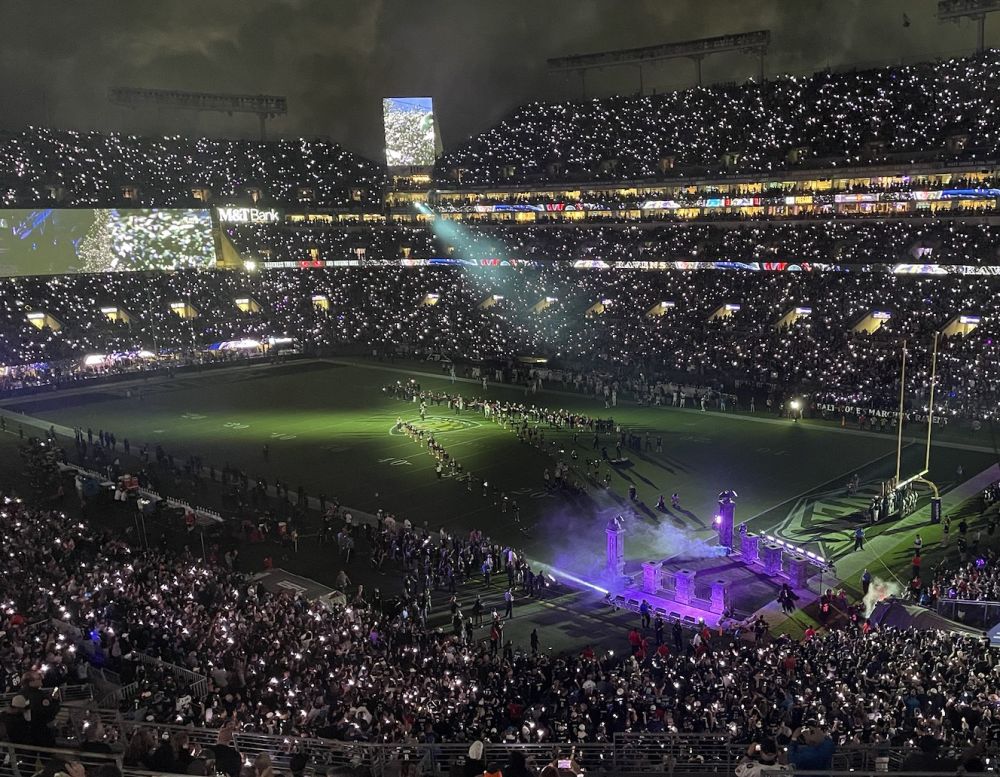“It is in your moments of decision that your destiny is shaped.”
– Anthony Robbins, motivational speaker
THE BALTIMORE RAVENS WERE 20 minutes away from selecting Lawrence Phillips instead of Jonathan Ogden. A Hall of Fame bust instead of a Hall of Famer whose bust would one day arrive in Canton. In retrospect, it was more akin to San Quentin instead of Canton. That, my friends, is how destiny and the decision making of foes created a champion.
For Ozzie Newsome, Vice President and Player Personnel Director of the Ravens, the decision was simple: Make a firm plan and stick with it.
After all of the pre-scouting and war room debates were through, on Friday, April 19, 1996, Newsome and newly appointed Director of College Scouting Phil Savage took their usual, daily jog through Owings Mills, Md. As usual, they talked draft the entire way. At one point, Savage, who had lost some sleep leading up to the draft, turned to Newsome and said, “Ozzie, I think we should just take the best player available. Our teams stinks and any great player will be an upgrade.”
The Modells, under duress around the nation from the February move, really wanted to make a splash with the pick, the fourth overall in the draft. Most of the scouts were in agreement: running back Lawrence Phillips of national champion Nebraska was a high-quality NFL running back prospect. Without question, a “splash” prospect and one that football hungry Baltimoreans would immediately recognize and be excited about.
There was, however, one major problem. Phillips had a long history of problems at Nebraska. There were rumors of drinking and recklessness. Rumors of communication problems with coaches abound. Worse, he was accused of pushing his pregnant girlfriend down a flight of steps. Violence, apparently, was something that Phillips didn’t limit to just the football field.
The Ravens scouts called the obsession with the young back’s talent “Phillipsitis.” Anyone who saw him in the January Fiesta Bowl, a 64-24 undressing of a quality Florida team, saw that the kid could play football. That was never in doubt.
However, when Savage had visited the Lincoln, Neb., campus the month prior to the draft, he saw some classic warning signs of danger ahead. Phillips was dressed in a Michigan sweat suit, not a Nebraska suit. He was aloof. He was sitting obviously apart from his team. He had a faraway look in his eyes. He was unresponsive in the interviewing process.
After that run outside the team’s complex on Friday, Savage came into the final war room meeting with all of the Ravens brass and fired his final salvo: “You’ll never sleep a peaceful night if you draft Lawrence Phillips. You’re not sure what he’s going to do while you’re asleep. You might not want to read the papers in the morning.”
The Ravens hierarchy heeded Savage’s wise advice, but didn’t elect to eliminate Phillips from the top of their board. Owner Art Modell was made more comfortable in drafting Phillips because he had spent an appreciable amount of time chatting with Phillips’ college coach Tom Osbourne, who vouched for his young protégé. The advice the youthful Savage offered was heeded and accepted, but only fully appreciated in retrospect.
The team’s draft board the next morning was set up thusly:
- Keyshawn Johnson, WR, USC
- Jonathan Ogden, T, UCLA
- Lawrence Phillips, RB, Nebraska
- Kevin Hardy, LB, Illinois
- Simeon Rice, LB, Illinois
The next morning the action proved fast and furious. The New York Jets selected the flamboyant Johnson immediately as expected. The Jacksonville Jaguars, who had taken their own future Hall of Fame left tackle candidate the previous year with Tony Boselli, opted for the quick and lithe Hardy to bolster their defense.
Then came the moment of truth and the first move of destiny for the 2000 World Champion Baltimore Ravens. The Arizona Cardinals took Modell, Newsome and Savage off the hook. Instead of selecting Ogden as expected, Bill Bidwill’s hopelessly star-crossed franchise selected Hardy’s Illini teammate, Simeon Rice.
Within a flash, the Baltimore Ravens were on the clock for the first draft pick of their existence. The choice, and the future of the franchise, was at hand.
Modell immediately turned to Newsome, fully understanding the previously agreed upon strategy, and offered his new personnel director a chance to change his mind.
“Ozzie, do you want to reconsider?” said Modell, reminding the Hall of Famer of his conversation with Osbourne.
“Art, Phil and I had a peaceful jog yesterday. We all talked about it and we all agreed,” Newsome said. “We’re taking Jonathan Ogden.”
Savage turned to Modell and said, “Mr. Modell, you’ll never regret that pick.”

The reason for the consensus on that Friday was very simple: Ogden was the better player and he would never embarrass the organization. “He was clean as a whistle,” Savage would later say. “And he was the better player.” No one in the room was particularly excited about taking an offensive lineman, yet no one in the room could believe that Ogden fell to them.
The first call that needed to be made was to current left tackle Tony Jones, who was still relatively shook up by the move from Cleveland. Now, his heir apparent was drafted, and he knew his time was to be short in Baltimore.



























